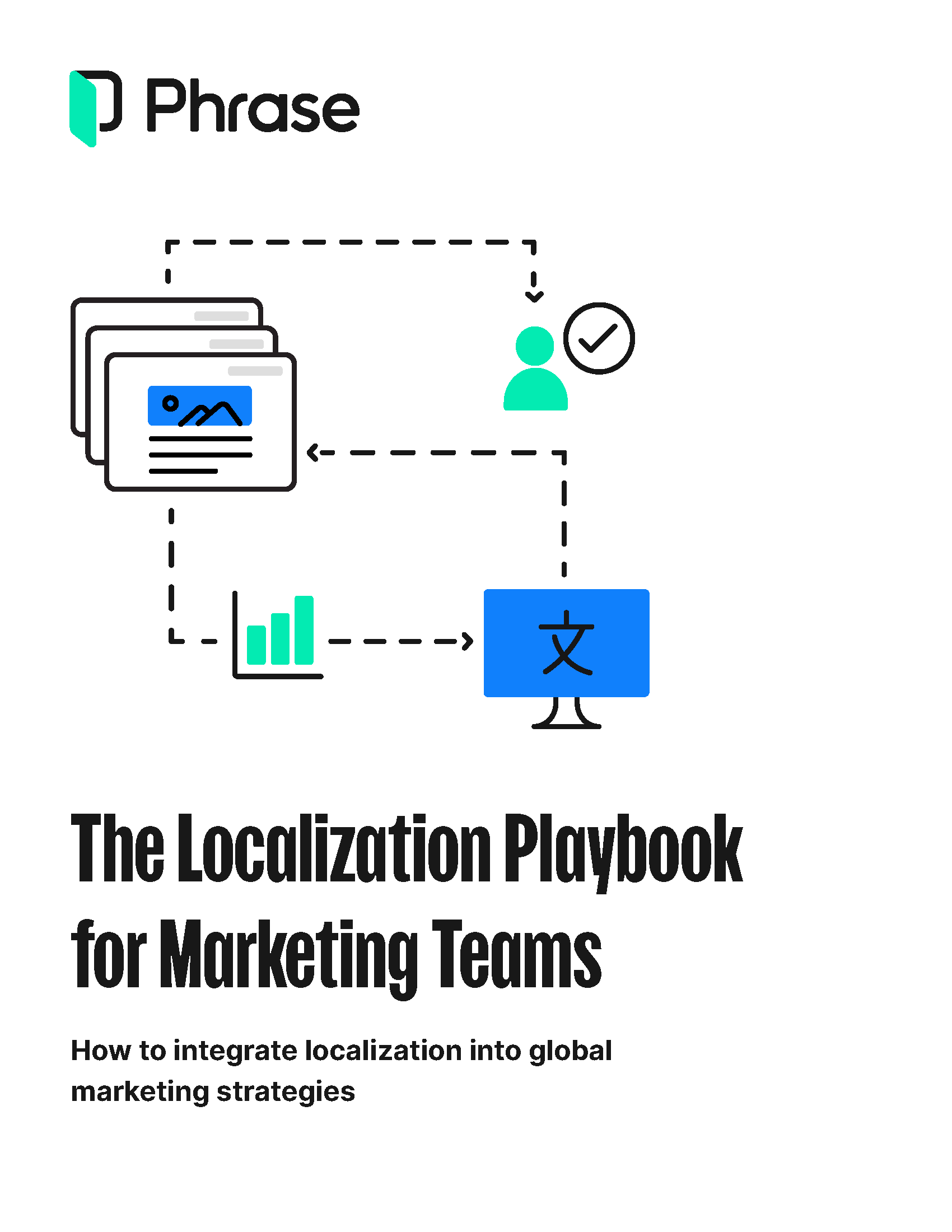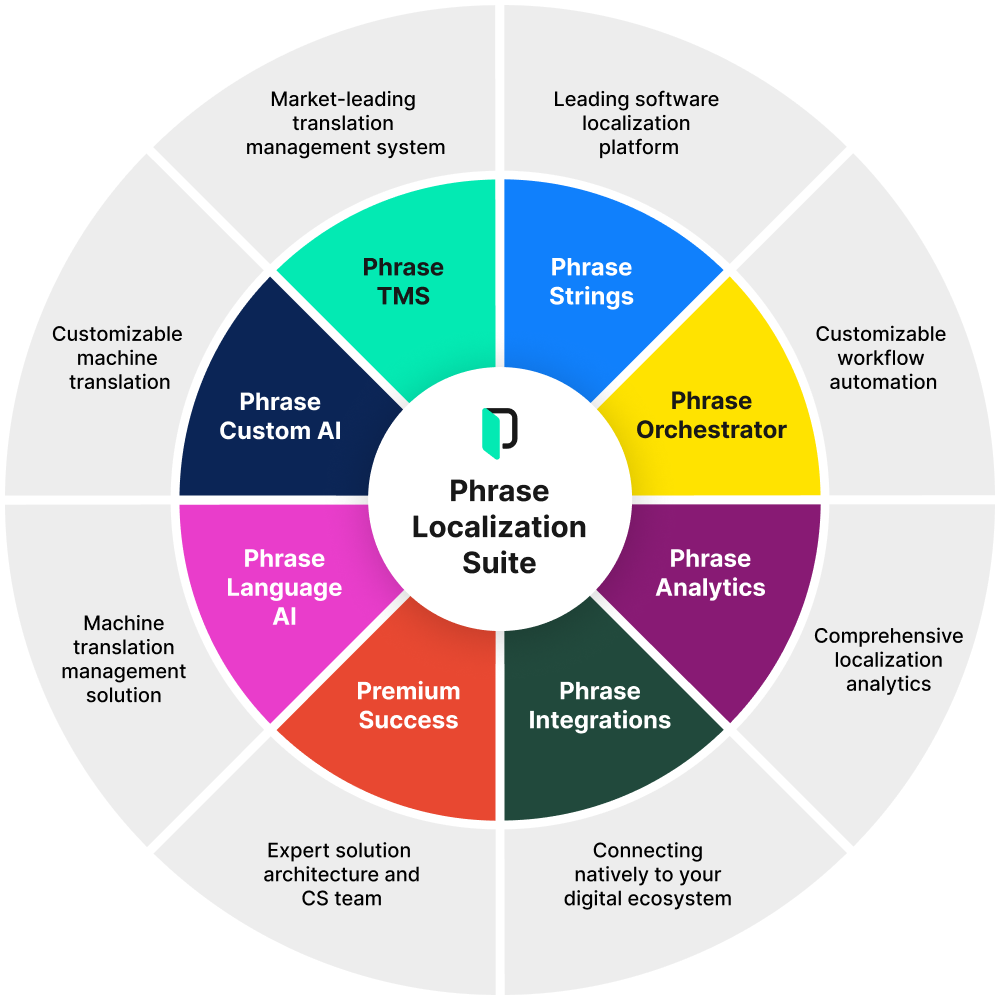Localization strategy
Global Opportunity Unleashed: Mastering Localization in Manufacturing Marketing

The evolving post-COVID manufacturing landscape prompts an increasing number of companies to adjust their business growth strategies. Confronted with supply chain challenges, demanding timelines, and rising costs, buyers are increasingly facing a decline in long-term relationships with their typical vendors. As a result, they are actively seeking new, reliable partners in new markets.
Within this shift, marketing teams are continually challenged to balance global standards and local preferences. On one hand, there’s a need to tailor content to specific industry nuances, business processes, and regional variations. On the other hand, maintaining global standardization is essential for a strong corporate identity that transcends geographical boundaries and preserves brand consistency.
To navigate this challenge, forward-thinking marketing teams have embraced a global marketing strategy centered around localization, balancing catering to local preferences and adhering to global standards. Follow this guide to learn more about how you too can build a localized marketing strategy that has the power to unlock new opportunities for your manufacturing business in new markets.

FREE DOWNLOAD
Make global marketing strategies work in local markets
Harness the power of localization to effectively connect with audiences worldwide and discover best practices for making your next global marketing endeavor a success.
Crafting a localization-friendly global marketing strategy
Robust global marketing strategies within the manufacturing sector prioritize localization from the outset, rather than treating it as an afterthought. Instead of relying on half-translated content, generic images lacking cultural resonance, and out-of-context approaches, marketing teams can enhance the customer journey by implementing tailor-made localized campaigns.
Achieving a seamless and glitch-free customer experience, from the initial contact to post-purchase interactions, requires the integration of localization throughout the entire marketing cycle, from analysis, design, and content creation to execution and performance tracking. Here are 5 essential steps for manufacturing marketing teams to craft a successful strategy that is both localization-friendly and highly effective across diverse markets.
Set up a cross-functional team with localization capabilities in key markets
To streamline and optimize localization efforts, it’s essential for marketing teams to build a well-coordinated team that brings together experts from diverse departments, including marketing strategists, localization managers, content creators, developers, designers, project managers, and more.
Additionally, appointing a dedicated localization manager who directly reports to the VP of marketing or CMO, while closely collaborating with local marketing teams in each region, can ensure seamless integration of localization into the company’s global marketing strategy.
Similarly, having local-market quality leads, whether in-house linguists, outsourced professionals, or in-country marketing teams, is crucial. They can play a vital role in identifying and addressing any issues or inconsistencies in the localized content before it goes live.
Finally, these teams serve as advocates for local activation efforts and facilitate communication with local press and influencers—building a bridge between global marketing strategies and the specific needs of local markets.
Share KPIs and metrics with other teams involved in localization
A cross-functional localization program in manufacturing marketing requires shared goals and data. By having a joint understanding of key marketing and localization-specific metrics, the team can make informed decisions to optimize localized content.
Just like the localization team should have access to key marketing metrics (e.g., web traffic, conversion rates, customer satisfaction scores) for each market and language they’re responsible for, localization-specific data should also be readily available to other teams within the organization.
For example, if the marketing team in Japan aims to enhance click-through rates (CTRs), the localization team can provide clear instructions to translators, emphasizing the importance of adapting CTAs to resonate with local users in the most compelling manner possible.
Create audience-specific content
If you have a lot of existing content in English, it might be tempting to just send it off for translation and call it a day. However, text that doesn’t consider cultural nuances, local preferences, and target audience habits won’t be immersive or effective. Audience-specific might mean rewriting some of the copy, creating video content, adapting email templates, etc.
Some assets, like SEO content, might need to be completely remade from scratch or highly localized to account for the absence of equivalent keywords, different search intents, varying format and content expectations even when the keyword does translate, unequal levels of buyer education across regions, local link-building requirements, and more.
Some other assets lend themselves better to regular translation—like product descriptions, to machine translation—like product reviews, or to an optimized combination of both—like whitepapers.
On-demand webinar
How marketers can effectively leverage machine translation
Learn from our expert panel how to keep up with the ever-growing demand for translated content and to scale to new markets without compromising your brand.
Prioritize assets for localization based on their return on investment
You don’t always have to go all-in with localization right from the start. Take the time to analyze every asset and investigate how much return on investment (ROI) each one can bring.
In many cases, it makes sense to begin by localizing your most successful and prominent content pieces and then expand gradually. If you want to localize in full, it can be useful to identify the type of content that won’t harm user experience if run through machine translation (MT).
For content that doesn’t get much traffic or isn’t as crucial, for example, you can use MT, at least initially. You can also decide if you’ll have a linguist edit the output. Since users typically scan through website or app content, looking for specific keywords and important information, MT can deliver a satisfactory result in many cases.
For example, users don’t normally expect product reviews on the app store—highly dynamic and quickly perishable content—to have the same level of linguistic quality as a testimonial that you’re featuring front and center on your homepage. Similarly, a CTA below your homepage fold should always be manually translated for maximum impact, while the footer of your product page can be harmlessly machine translated with minor touch-ups.
Let localization technology do the heavy lifting
Regardless of the exact localization setup you go for, automation should be part of any localization workflow, and you need the right platform and tools to support it. However, the company size, the type of content involved, and the required languages will all affect the degree of automation needed and the features you can’t do without.
In general, any marketing localization process should include the following as a minimum:
- A single point of truth for all your multilingual content: This is crucial to store all your localization assets, manage the content in multiple languages, reuse previously translated content, monitor progress and performance, share terminology and contextual data with translators, and generate reports for data-driven decisions.
- A centralized wiki: Documentation is key to ensure your team is on the same page regarding processes, procedures, brand and style guidelines, how to write localization-friendly content, etc.
- Integrations with third-party marketing software: Your chosen localization platform should offer native integrations—i.e., without any middleware—with the rest of your marketing tech stack. From your CRM and CMS to your ecommerce platform and marketing automation tools, system integration is what facilitates scalable marketing localization.
- Open communication channels: When members of different teams with a stake in the localization process can communicate effectively and quickly, bottlenecks are cleared instantly, and issues can be addressed faster. For example, marketers can provide feedback or clarification directly to translators, translators can ask designers to add space for UI elements with longer translations, etc.
Take localization to new heights with Phrase
Relying on robust localization technology is key to maximizing the impact of your international marketing campaigns. Global enterprises worldwide trust Phrase—a fully integrated suite of translation automation technology—to reach more people, make deeper connections, and drive global growth.

The Phrase Localization Platform seamlessly connects with your digital ecosystem, catering to your current needs while scaling effortlessly as your requirements evolve. Add fully flexible pricing, and it’s easy to see why marketing teams around the world choose Phrase to launch multilingual marketing campaigns with the best possible quality and consistency:
- Streamline manual or repetitive translation tasks with smart automation.
- Centralize all files and orchestrate entire translation workflows in a unified, cloud-based localization suite designed for the unique needs of marketing teams.
- Facilitate seamless collaboration among team members spanning different time zones.
- Unlock the combined potential of established translation technology, incorporating CAT tools, along with the advanced capabilities of AI-powered machine translation.
- Send your content for translation using familiar file formats such as DOCX, PSD, SVG, HTML, and more.
- Offer valuable context for linguists by adding screenshots or comments to translation strings.
- Allow linguists to review their work in its native format with real-time changes through an in-context preview.
- Leverage out-of-the-box integrations with your preferred marketing automation platform, CMS, or CRM—HubSpot, Adobe Experience Manager, WordPress, Drupal, Contentful, Contentstack, Sitecore, Kontent, etc.
Speak with an expert
Want to learn how our solutions can help you unlock global opportunity? We’d be happy to show you around the Phrase Localization Platform and answer any questions you may have.






